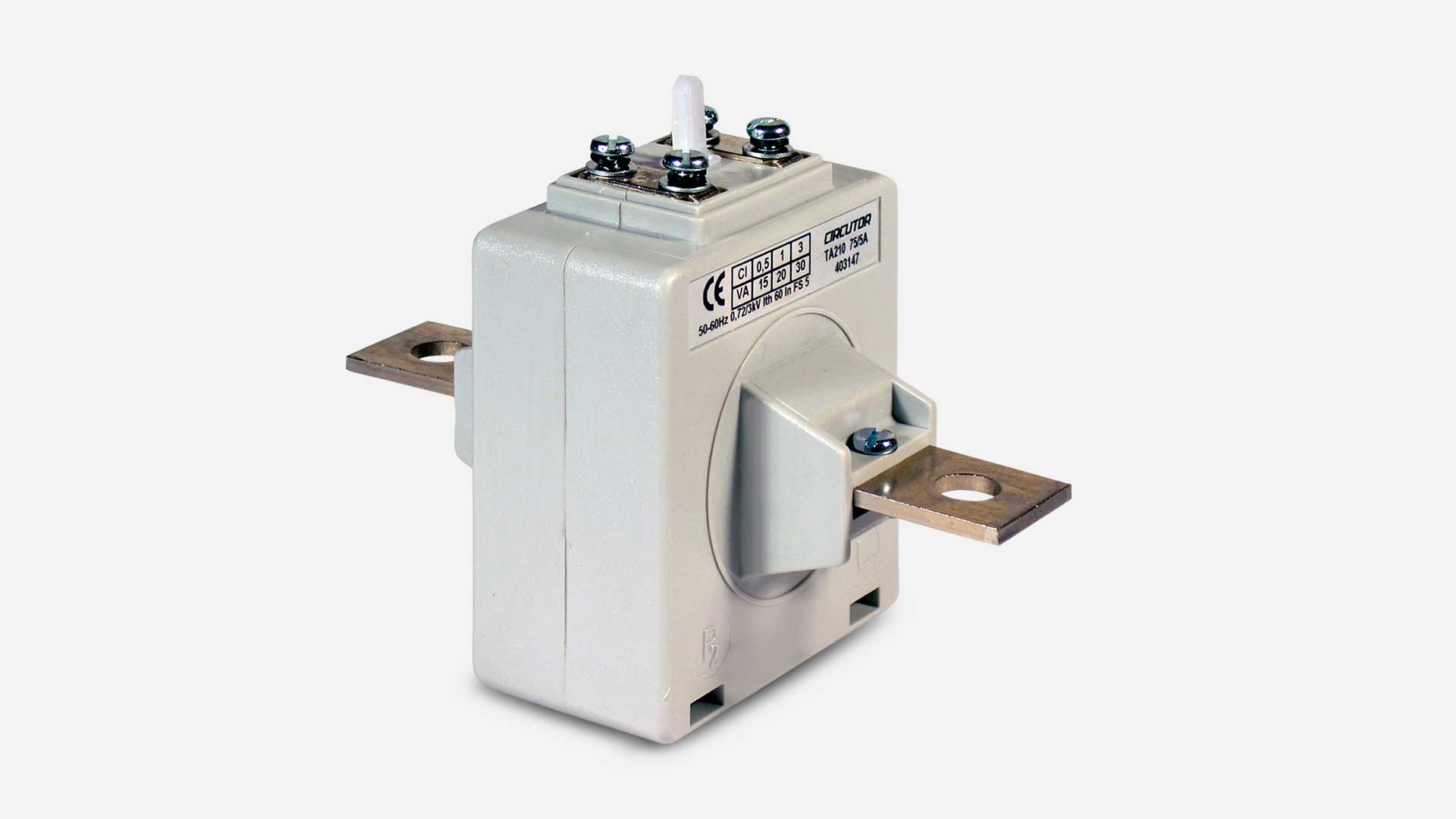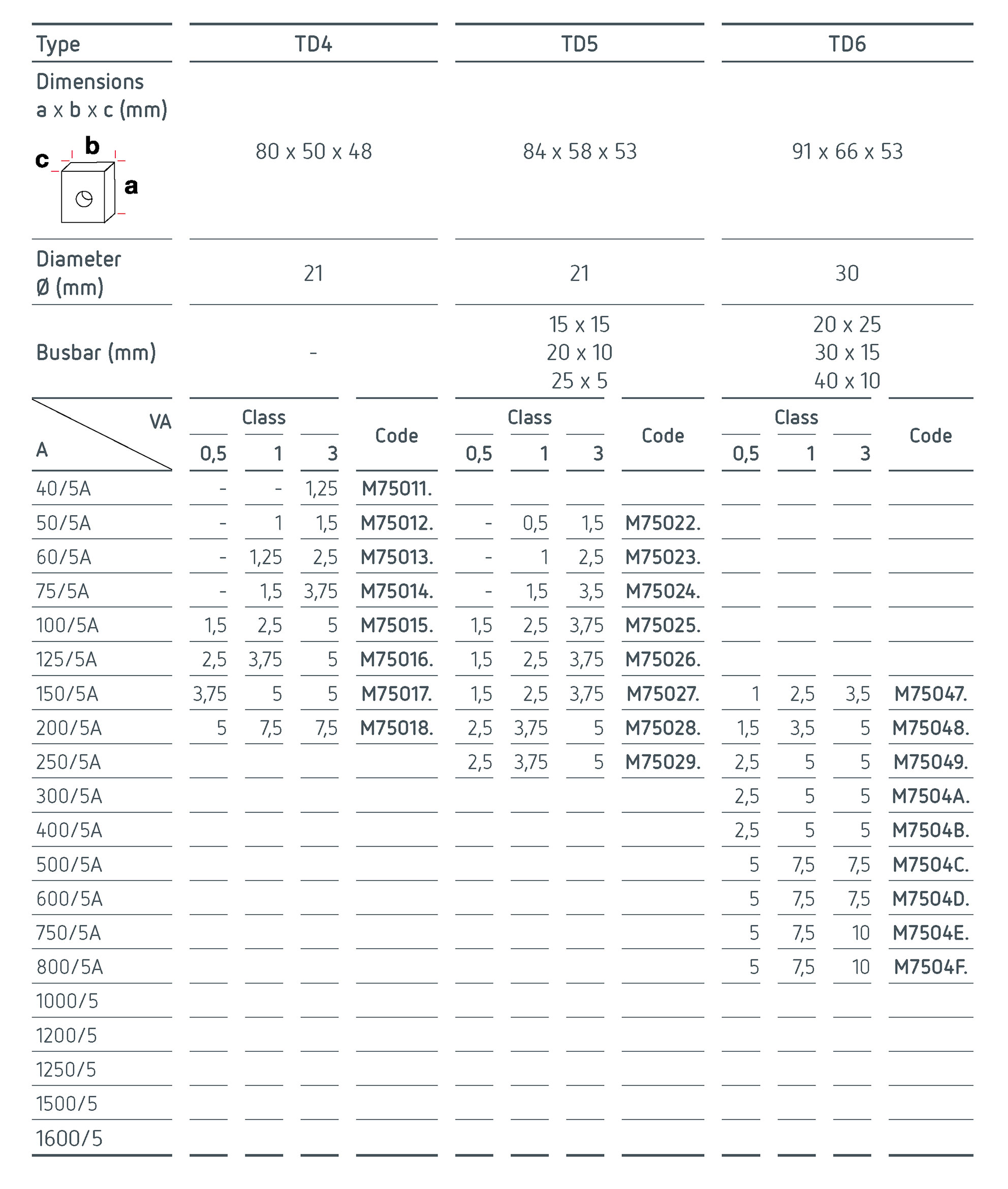
In this article, we would like to discuss the most important aspects when selecting a current transformer, considering the type of installation where it will be used, as well as the technical characteristics it must comply with. The decision of which current transformer to use brings with it a series of questions that we have to answer before choosing the best model for each case.
Our advice is that you never choose a current transformer without first evaluating each and every one of the following issues.
The nominal current
To start with, it is very important to know the nominal current your transformer will be measuring, since this will determine primary current. For example, if the line carries 120 A, you should select a transformer with a primary current of 150 A, providing some margin so the transformer is not working at 100%, as you would want to do with any machine you use every day, such as a car, which you don't push to full RPMs for any length of time.
Once you determine the primary current, you have to decide how much secondary current you need. The standard is to use a secondary of.../5 A, but there are other options such as.../1 A and.../250 mA. It is important to keep in mind that the lower the secondary current, the lower the Joule losses will be.
The secondary current depends mainly on the analyzer you have, which will indicate the type of current input (.../5 A,.../1 A or.../250 mA).

The installation of current transformers allows the different measuring devices to provide reliable and traceable data on the evolution of consumption and production processes in electrical installations.
The thermal rating
It is also important to know the transformer's thermal rating, as this indicates its maximum operating temperature. Thus, by knowing the temperature generated in your installation, you can determine if you can use a given transformer or not.
The size
Turning now to the physical characteristics of transformers, one important detail we have to consider is the size of the transformer, both external and of the internal window. The external measurements can be important if space is limited in your installation, since the space where the transformer can be installed may be very narrow, which complicates access.
As for the size of the transformer's internal window, it is important to consider the type of wiring that has to pass through the transformer's inside (dimensions and diameter), since this will determine which transformer model you end up choosing.
Turning now to the installation where the transformers will go, there are also a series of aspects that will provide clues as to what type of transformer to use in each case. Below is an example of each case:





To do this, it is essential to take into account the accuracy class you need. This usually goes hand in hand with the analyzer, which determines the limit that it is able to measure. In other words, if the analyzer indicates that it can measure currents with accuracy class 1, your transformer must be able to provide this same kind of accuracy or better for the values to be reliable.
It is also important to know the power you need the transformer to provide, since if it is not enough, the signal received will contain errors.
The power required is calculated as follows:

As you can see, in order to be effective, the transformer's power must be higher than the sum of the losses in the cable and in the measuring device. Therefore:

To calculate the power loss:

Below is an example of a real installation, with the following characteristics:

With the Joule effect losses in the conductors, what we do now is check the consumption of the analyzer in the current measurement section.

The data sheet shows that the current measurement circuit consumes 0.9 VA. Thus, in addition to the consumption in the secondary cabling, we have total losses of:

Taking all these figures into consideration, the final step is to go to the data sheet of the model that you decide to use in your installation and find the specific transformer you need.
In this case, since it is a new installation, we will go to the data sheet of the TD transformers.
References

What we need to do is take into account the nominal current in our example (210 A). We thus have to select a 250/5 A transformer. And we will also take into account the diameter of the cable that has to pass through the transformer's internal window. In our case, it is a 25 mm cable, so the best model is the TD6, which has a window with a 30-mm diameter.
Continuing with the transformer selection, it is important to keep in mind that the requirement in terms of accuracy class is 0.5. Se we need to check the first column for model TD6. We have to check that the power shown on the data sheet is higher than the 1.97 VA we calculated earlier.
In this case, we see that the power of the 250/5 A TD6 transformer in Accuracy Class 0.5 is 2.5 VA.
Since 2.5 VA > 1.97 VA, we can conclude that the transformer with item number M75049 is best suited for our installation.
As we have seen, all the aspects mentioned in this article are relevant when selecting the current transformer for an installation. If you ignore them, you may find that the reading you are going to take is not correct or is not optimized.
If you follow all these steps, you will be sure to find the ideal transformer for your installation.

WRITTEN BY CIRCUTOR